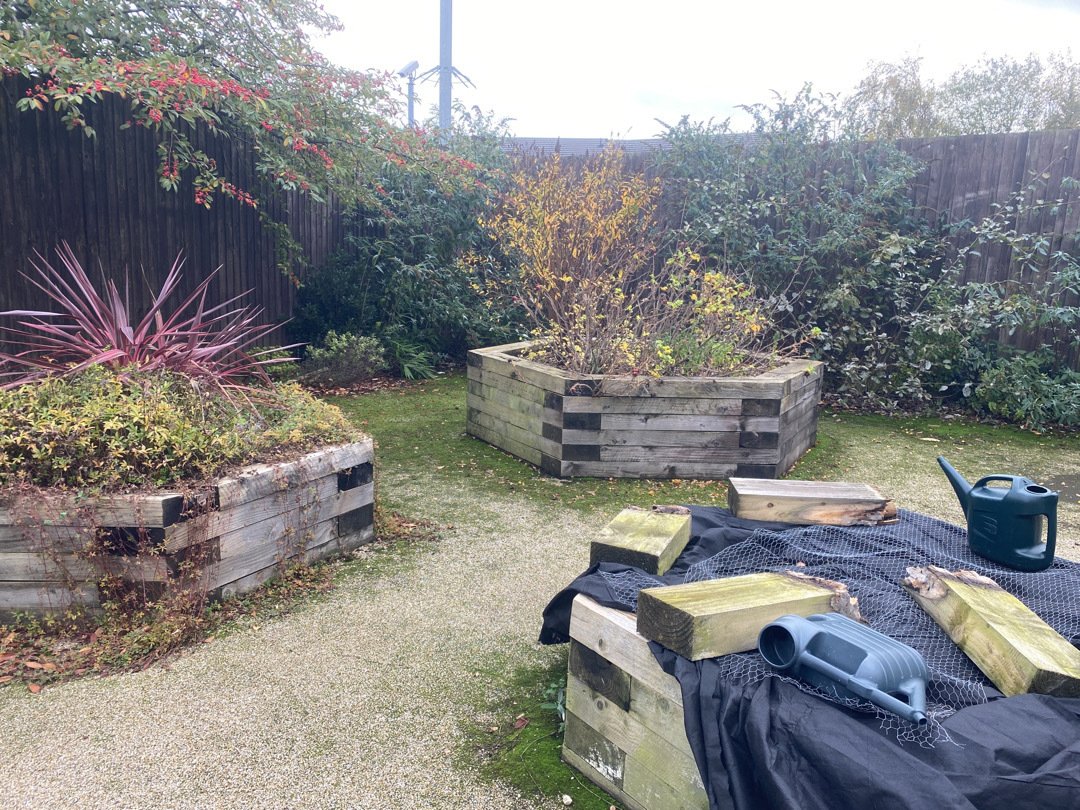Biodiversity, Health and Wellbeing
Organisation: Nottinghamshire Healthcare NHS Foundation Trust
Size: Approx 10,000 staff
Populations served: Nottinghamshire and surrounding counties
The project had two main aims:
To develop a baseline for the value of the Trust’s greenspace both in terms of biodiversity, and, in relation to staff/service user health and wellbeing. This included key species and habitats on site and the wider area, and how the sites are currently used.
To identify opportunities to further the value of the greenspace for biodiversity and service users, especially in terms of green social prescribing. Covering potential changes to sites for improvements both in biodiversity and use by staff and patients.
Impact of the project
Two surveys were undertaken as part of this project. Firstly, surveys to determine the baseline biodiversity assessment. These have given far greater understanding of the current status of the 9 sites that were included in the scope of the project and how they fit in to the wider environment.
Secondly, surveys of staff and patients’ views and opinions to give a better understanding of how sites are currently used and what they would like them to be used for in the future.
In combination, the two elements give the Trust the baseline of information about what we can do with our sites to benefit staff and patients and also increase the biodiversity of the sites, building on the established link between access to greenspace and improvements in both mental and physical health.
How was the project delivered?
A grant was obtained from Natural England to cover the costs of contracting an ecology consultancy (RammSanderson) to undertake the baseline surveys, manage the staff consultation data and produce a report. The finances for the project came from Natural England’s Nature Recovery Network Seedcorn funding, which aims to benefit both people and wildlife.
The initial tranche of 7 sites involved were visited in November 2022 to undertake the biodiversity surveys with a further 2 sites visited in February 2023 due to underspend in estimated costs.
Key contacts at all sites were identified both to gain access and as contacts for the staff surveys at a later date.
The baseline surveys consisted of several sections.
A Desk Based Assessment looking at available resources showing the known important habitats and species that have been recorded within a certain distance of the site (either 1 or 5km depending on the information source).
An onsite survey covering a Phase 1 Habitat survey and Species Scoping Assessment, which identifies the habitats and species present on the site, their condition and how abundant they are on the site. This also identifies potential invasive species.
Lastly, all the gathered information is assessed in a Biodiversity Impact Assessment to produce a score for the site.
The site user questions were determined in discussion with those involved in the project set-up to better understand the staff knowledge of the current situation and needs for the future. The patient engagement was through a request to occupational therapy staff on the sites to discuss the issues during patient therapy work.
The project required assistance from several members of the Trust staff as well as local groups linked to Green Social Prescribing and regional Natural England staff.
What is the future of this programme?
This project has given a much greater understanding of the baseline biodiversity value of the 9 sites covered and with around 50 sites across the Trust, it can be used as a model of how to implement similar work in future. It has also provided more information of staff and patient needs for the sites. With additional funding, this model can be implemented across the sites in the Trust with significant potential for improvement in these two areas.
In addition, the proposals identified in the final report can be implemented on the sites as part of future redevelopment work or if other funding becomes available. Work is continuing to assess whether there is scope for the Trust’s estate to be included within a Biodiversity Net Gain credits scheme, which may be a route to sourcing consistent funding.
Advice for others doing similar work
The project had a couple of challenges which became apparent during the work:
Timing of the project – undertaking biodiversity surveys over winter means that some species may not be visible or present (if mobile) and so may not give the full picture of the site in question.
People Surveys - getting access to people and encouraging participation was underestimated. In addition, the work required to get the right questions in the right format was more than expected.
These two issues combined to limited the time available to get responses from staff and patients with the deadline given by Natural England (the project funder).
Site management buy-in and the support of other relevant people on any site where this kind of work is to be undertaken is key. It is essential to make staff aware of the plans and outcomes for the project so that they understand from the outset the benefits that can be realised from assisting.
For more information about the programme:
Graham White
graham.white@nottshc.nhs.uk



